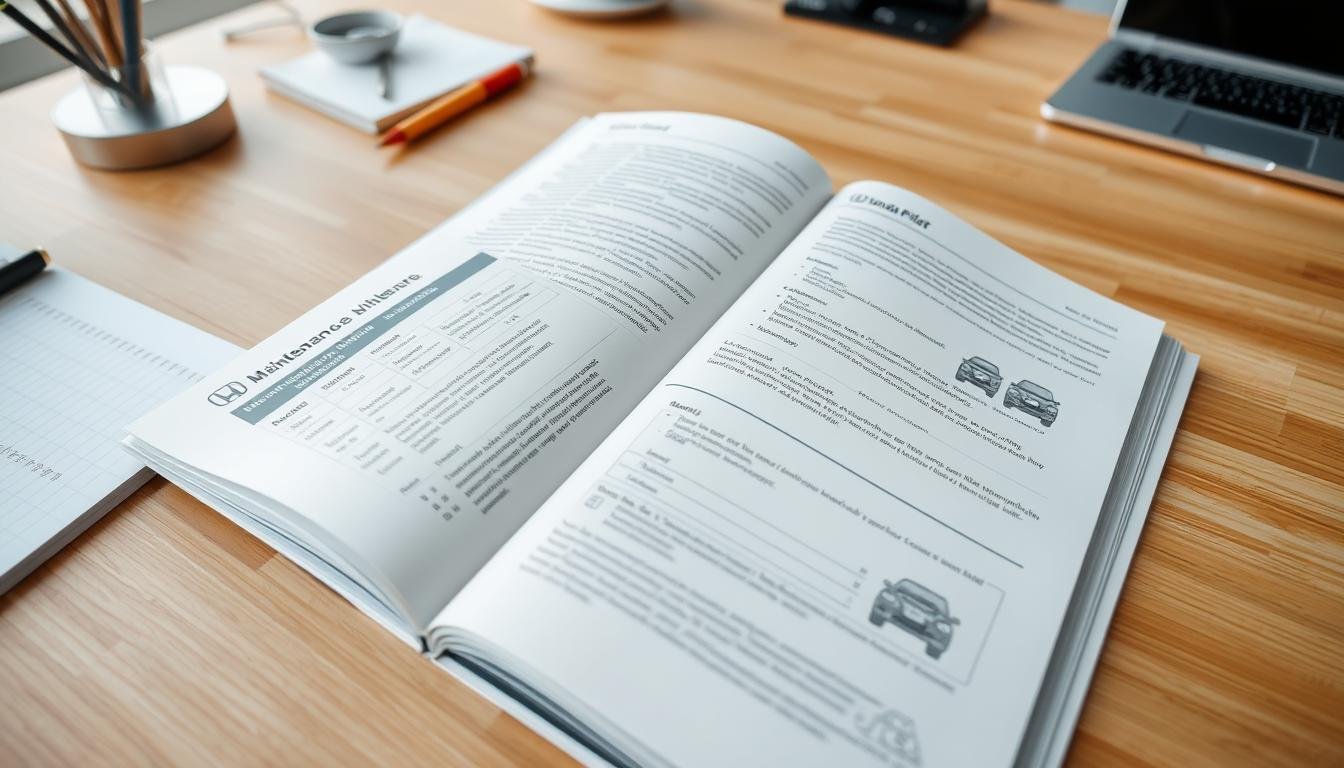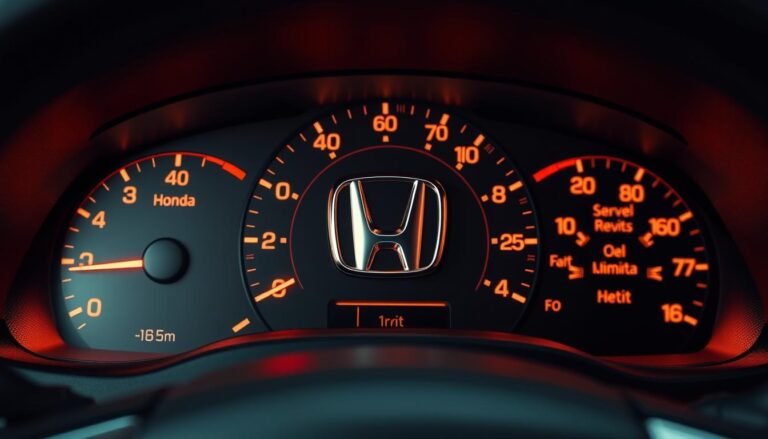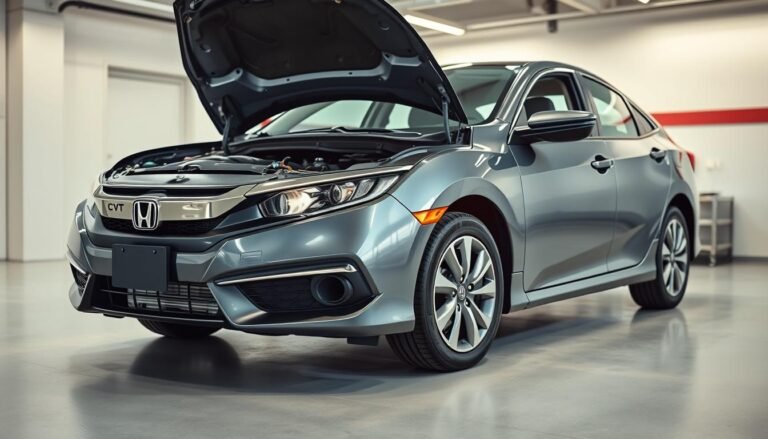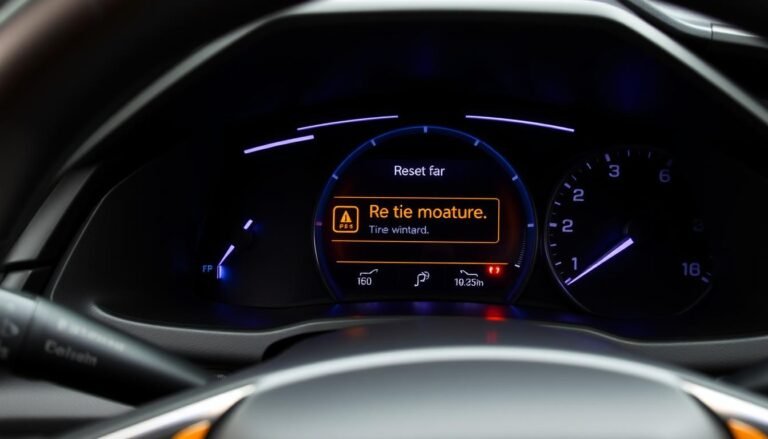Honda Pilot Maintenance Schedule by mileage? Essential Guide
What’s the Honda Pilot maintenance schedule by mileage? It’s your key to keeping your SUV in top shape.
As an owner, knowing this schedule means you’ll know when to service your car.
This guide gives you the important details on maintenance tasks like oil changes and tire rotations, based on mileage.
Following a planned maintenance plan boosts your driving experience and prevents expensive repairs.
You’ll find out which services are needed at different mileage points to keep your car in great condition. This approach ensures your Honda Pilot runs well and lasts longer.
Ready to learn more about your Honda Pilot maintenance schedule by mileage? Here’s everything you need to know for proper car care.
What Is The Importance of Maintenance?
Regular maintenance is key to keeping your Honda Pilot safe, reliable, and efficient.
Keeping up with your vehicle’s care means it will last longer and be less likely to break down unexpectedly.
Getting your car serviced regularly helps find small problems before they get big and expensive.
This approach saves you money because small fixes are cheaper than big repairs. By sticking to the maintenance schedule, you’ll feel confident your car is in good shape.
Maintaining your vehicle well is essential for safe driving. Regular inspections and tune-ups ensure your Honda Pilot is ready for everyday use. This keeps you and everyone in the car safe while traveling.
What is The Honda Pilot Maintenance Schedule by Mileage?
The Honda Pilot maintenance schedule is key for keeping your car running well. It lists when to get service done to avoid problems.
Keeping up with this schedule helps your car work better and last longer. Services start at 7,500 miles and then at 15,000 miles, 30,000 miles, 60,000 miles, and more.
Following this schedule means small issues get fixed before they’re big problems.
Staying on track with services means your Honda Pilot will drive smoother, use less gas, and be worth more when you sell it.
How Mileage Affects Your Honda Pilot’s Performance?
Mileage is key in how well your Honda Pilot runs and its condition over time. As the miles add up, the engine faces stress and wears down.
This can lead to more engine wear, needing new parts, and fluids breaking down. These issues reduce power, make fuel use worse, and increase the chance of breakdowns.
It’s vital to know how mileage affects your Honda Pilot. Regular upkeep is more important as your car gets older.
This means replacing old parts, changing fluids, and making sure everything works right. Keeping up with maintenance helps avoid problems caused by high mileage.

By understanding mileage and maintenance, you can keep your Honda Pilot running longer and better. Regular check-ups improve the engine and make driving smoother.
Key Components of The Honda Pilot Maintenance Schedule
Knowing the key parts of taking care of your Honda Pilot is very important. It makes sure your car runs well and safely.
Changing the oil regularly and rotating the tires correctly are especially important for good performance and safety.
Regular Oil Changes
Changing your oil often is key to keeping your engine in top shape. It keeps the engine well-lubricated and running smoothly.
You should change your oil every 5,000 to 7,500 miles. This depends on how you drive and the type of oil you use.
Not changing your oil can lead to engine damage and reduced efficiency.
Tire Rotation and Balancing
Rotating and balancing your tires makes sure they wear down evenly. This improves grip, makes tires last longer, and ensures your car handles safely.
Try to rotate your tires as often as you change the oil. Proper tire care lowers the chance of sudden tire failures. It helps your Honda Pilot stay reliable.

Honda Pilot Mileage Maintenance Plan
For your Honda Pilot to last long, creating a mileage maintenance plan is key. This means you need to keep up with services on a set schedule.
Make sure to take care of important tasks at certain mileage points. This includes getting oil changes, rotating tires, and checking key parts of the car.
A good maintenance plan means your car gets looked after regularly. Doing this can stop sudden car problems and might even make your car worth more if you sell it.
If you follow this plan, your Honda Pilot will be safer and more dependable on the road.

| Mileage Interval | Recommended Service | Notes |
|---|---|---|
| 7,500 miles | Oil Change, Tire Rotation | Check fluids and filters |
| 15,000 miles | Brake Inspection, Fluid Replacement | Inspect belts and hoses |
| 30,000 miles | Air Filter Replacement, Trans fluid | Alignment check |
| 60,000 miles | Timing Belt Check, Major Inspection | Comprehensive system check |
Honda Pilot Service Intervals by Mileage
Knowing when to service your Honda Pilot is key to keeping it in good shape. Regular check-ups help hit service marks on time.
This stops problems before they start and makes your car last longer. Here are the main service points for the Honda Pilot at 7,500 and 15,000 miles.
7,500 Miles Maintenance Overview
At 7,500 miles, your Honda Pilot needs basic care to stay smooth. This includes:
- Oil change to keep the engine running well.
- Tire rotation for even wear and longer tire life.
- Checking key systems like brakes and steering.
15,000 Miles Maintenance Overview
By 15,000 miles, your car’s care grows to more checks and fluid level inspections. This includes:
- Everything done at the 7,500-mile check.
- Changing air filters if necessary.
- Looking at transmission fluid and other key fluids.
- Detailed check of belts and hoses.

Honda Pilot Routine Maintenance Guidelines
The Honda Pilot routine maintenance guidelines include important tasks you should do regularly.
These tasks, like checking your car’s fluids, inspecting air filters, and looking at the battery and brakes, keep your car running well. They also help keep you safe on the road.
Following these service tips at the right mileage helps your car last longer. By being proactive, you can stop problems before they start.
This lets you have a worry-free driving experience. Below, you’ll find a list of maintenance tasks and when to do them:
| Maintenance Task | Frequency | Details |
|---|---|---|
| Oil Change | Every 7,500 miles | Replace oil and oil filter to keep your engine healthy. |
| Tire Rotation | Every 5,000 miles | Rotating tires helps them wear evenly and lasts longer. |
| Fluid Level Checks | Every month | Check the levels of engine oil, coolant, brake, and transmission fluid. |
| Battery Inspection | Every 6 months | Look for corrosion on battery terminals and make sure connections are tight. |
| Brake Inspection | Annually | Check brake pads, rotors, and fluid to ensure they’re working well. |
Common Issues At Mileage Milestones
When your Honda Pilot hits certain mileage marks, some issues might pop up. Keeping up with the Honda Pilot’s service recommendations can stop these issues from getting worse. This helps keep your car running smoothly.
30,000 Miles Common Services
At 30,000 miles, you need to think about some important maintenance tasks. These can include:
- Changing air filters to keep the air clean and the engine running well.
- Inspecting drive belts for signs of damage, which can impact how the car runs.
- Checking the rear differential fluid for the drivetrain to work smoothly.
Skipping these services can cause problems down the line. It can affect both how the car performs and its safety.
60,000 Miles Common Services
Getting close to 60,000 miles is a key moment for your Honda Pilot’s upkeep. This is when it needs more detailed services:
- Fluid flushes for the transmission and brakes are vital to avoid breakdowns.
- A thorough check of parts like suspension and steering helps avoid future issues.
- Replacing spark plugs can make your engine run better and save fuel.
Handling these services at the 60,000-mile mark can prevent big problems later. This keeps your Honda Pilot running longer.
Best Practices For Following The Maintenance Schedule
To keep your Honda Pilot running well, follow the maintenance schedule closely. Organizing is key to your car’s health.
Keep an eye on mileage and schedule services when needed. The Honda Maintenance Minder sends reminders, which are helpful.
But, don’t rely on it for everything. Use personal checks and calendar reminders, too. This helps you take charge of car care, keeping your vehicle in top shape.
Conclusion
Keeping up with the Honda Pilot’s maintenance schedule is key for its safety, efficiency, and performance. Following this guide ensures all important services are done on time.
This helps you get the most out of your Honda Pilot. Regular maintenance makes your vehicle run smoothly and last longer. It also increases its value over time.
By following this upkeep guide, your Honda Pilot will remain reliable and comfortable to drive for many years.
Make car care a top thing on your to-do list to enjoy a well-maintained Honda Pilot. This way, you protect your investment and make every trip more enjoyable.
FAQs
Q: What is the recommended Honda Pilot maintenance schedule by mileage?
A: The Honda Pilot maintenance schedule recommends oil changes every 5,000 to 7,500 miles. Tire rotations should happen at the same time. And comprehensive services at 15,000, 30,000, and 60,000 miles, which include fluid changes and system inspections.
Q: How often should I perform routine maintenance on my Honda Pilot?
A: Routine maintenance on your Honda Pilot should happen every 7,500 miles. This includes oil changes, tire rotations, and system inspections like brakes and steering.
Q: What are the benefits of following the Honda Pilot mileage maintenance plan?
A: Following the Honda Pilot maintenance plan ensures your car performs well. It keeps you safe, avoids sudden repairs, and helps the car hold its value. By doing this, critical parts stay in good shape.
Q: At what mileage should I start checking the transmission fluid?
A: Check the transmission fluid at 30,000 miles. Consider a fluid flush at the 60,000-mile service to keep your Honda Pilot running smoothly.
Q: Can I extend the intervals between oil changes for my Honda Pilot?
A: Though some suggest waiting longer, sticking to the 5,000 to 7,500 miles oil change schedule is best. It keeps the engine healthy for a long time.
Q: What are the common issues to watch for at 60,000 miles?
A: At 60,000 miles, watch for potential issues. Pay attention to transmission fluid, brakes, and the state of belts and hoses. This is a good time for comprehensive inspections and fluid flushes.
Q: How can I keep track of my Honda Pilot’s maintenance schedule?
A: To track your Honda Pilot’s maintenance schedule, use the Honda Maintenance Minder system. You can also set calendar reminders or keep a service record logbook.







